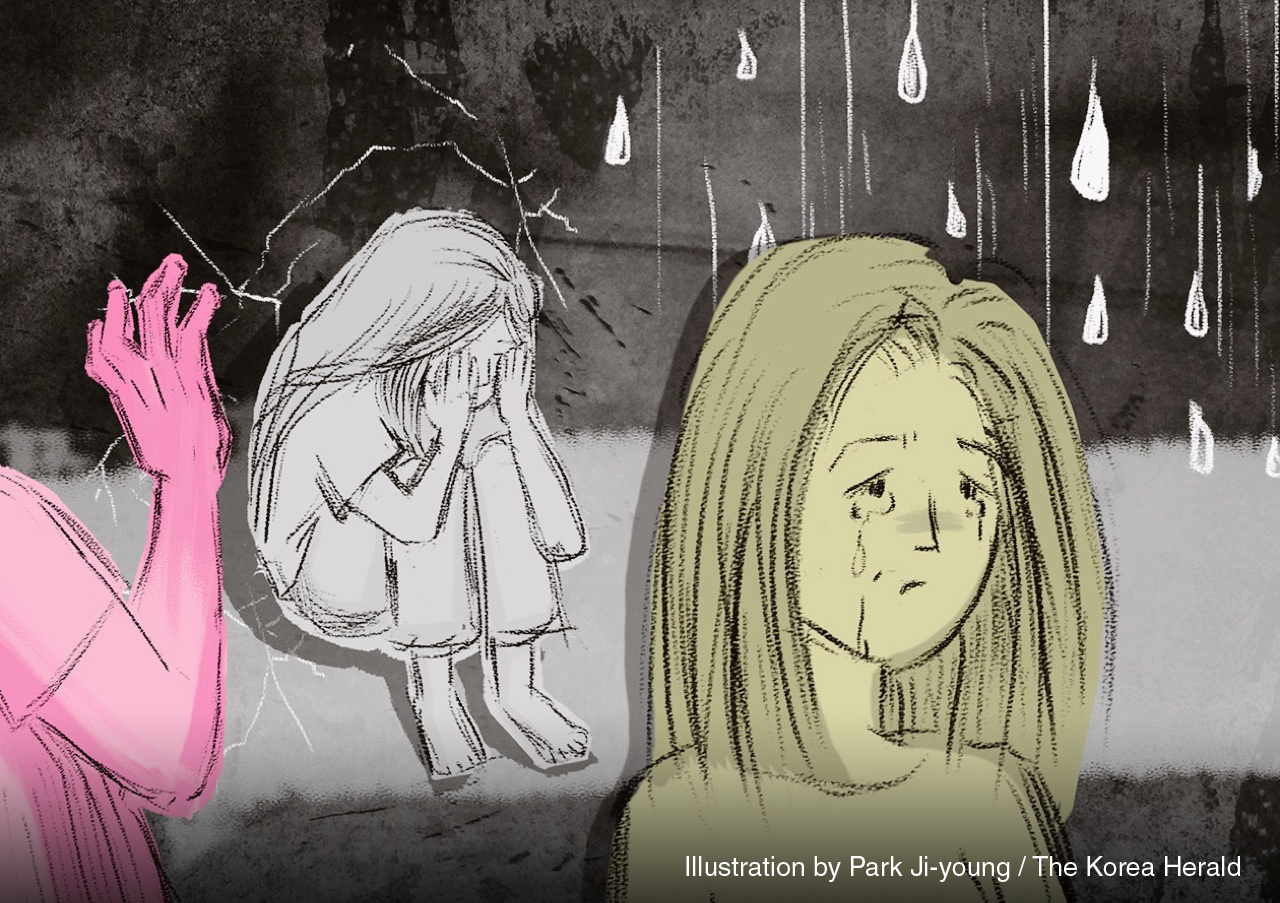Videos of police encounters have become a crucial tool in holding law enforcement accountable, and for the generation raised with smartphones, recording racial injustice is instinctual.
Nowhere has the power of a bystander willing to hit record been more clear than the case of George Floyd, a 46-year-old Black man who was murdered by Minneapolis police officer Derek Chauvin on May 25, 2020. Chauvin, who is white, pressed his knee into Floyd's neck for 9 minutes and 29 seconds, ignoring Floyd's insistence that he couldn't breathe. Floyd's death at the hands of a white officer sparked a global movement against systemic racism and police brutality, bringing even more attention to police violence in the United States as law enforcement tear gassed, beat, and detained demonstrators. In the last year, the Black Lives Matter movement has grown to what may be the largest movement in U.S. history.
Chauvin was found guilty of second-degree unintentional murder, third-degree murder, and second-degree manslaughterlast month. But Floyd is just one of countless victims of police violence and racism, and while many people expressed relief over Chauvin's conviction, courts have historically been overwhelmingly sympathetic to police officers.
Floyd's case stands out, however, for one simple reason: The jury was able to see exactly what Chauvin did because there was a video of the entire incident. Darnella Frazier, a 17-year-old high school student, had the presence of mind to record Floyd's last moments while walking by.
Frazier's video, which went viral on social media last year, is credited with both bringing attention to the broken, racist policing system in the United States and with proving Chauvin's guilt.
 Hundreds gathered to rally outside the courthouse after Derek Chauvin's guilty verdict was announced.Credit: jeff wheeler / Star Tribune via Getty Images
Hundreds gathered to rally outside the courthouse after Derek Chauvin's guilty verdict was announced.Credit: jeff wheeler / Star Tribune via Getty ImagesDuring an interview with 60 Minutes, Minnesota Attorney General Keith Ellison described the video as an "indispensable piece" of the case, adding that he had "real doubts" that the world would know of how Floyd died if not for the video. The first public statement from the Minneapolis Police Department claimedthat Floyd was "suffering medical distress" when he was handcuffed, taking the blame off of the officers involved.
"I think that if he [Chauvin] looks at history, he has every reason to believe that he would never be held accountable," Ellison, who was the lead prosecutor in this trial, told 60 Minutes. "There's never been anyone in Minnesota convicted — any police officer convicted — of second-degree murder in the history of our state. So this was precedent setting in that way. So history was on his side."
An act of intervention
In a country where the police, backed by unions with immense bargaining power, have a history of concealing abuse, civilians can often do little when witnessing a police encounter or racist incident. That gut instinct to begin recording these types of encounters was a "natural progression" of cellphone use, said Cat Brooks, who cofounded the Anti-Police Terror Project, which works to defund the Oakland Police Department, document police abuse, and design a better response to mental health crises that doesn't involve law enforcement.
In one of the first cases to use cellphone footage as evidence, passengers on the platform of an Oakland BART station recorded multiple angles of police officer Johannes Mehserle shooting 22-year-old Oscar Grant in the back. Since the 2009 shooting, smartphones, which were once a luxury, are a now tool that most people own. Using them to record cops allows people to maintain a sliver of power. The social impact of Frazier's video, particularly, has helped turn recording cops into standard practice for bystanders, especially as police reports have shown to be unreliable time and again.
"It's an act of intervention, the most dramatic one that someone [can take] without putting themselves in harm's way."
"In Black communities, it's a form of self-determination," Brooks continued. "It's an act of intervention, the most dramatic one that someone [can take] without putting themselves in harm's way."
In the more than a decade since Mehserle killed Grant, younger generations developed an ability to capture events as they unfold with steady clarity. Documenting their day-to-day is the norm, and by virtue of constantly consuming digital content, Gen Z and millennials have honed storytelling skills as reporters of their own lives. That means their recordings and would-be evidence is that much more clear, watchable, and compelling. Frazier, for example, was praised for staying steady and keeping Chauvin and Floyd centered in the frame despite the trauma of witnessing the incident.
Amid persistent social media activism, it's also become standard practice to raise alarm over the unjust system by sharing said videos. Like Frazier did after witnessing Floyd's death, those who capture these videos seamlessly post their footage on TikTok, Facebook, or Twitter. During the height of the protests in support of the Black Lives Matter movement, demonstrators livestreamed confrontations with police officers out of concern that they'd be misconstrued in favor of police.
The instinct to share what we've witnessed — often immediately after it happened — has also raised questions about the difference between spreading awareness of injustice and exploiting someone's death. Those who post footage online face an ethical conundrum: They could, like Frazier, be sharing valuable evidence. At the same time, they're sharing footage of someone else's pain and there's not always the opportunity for that person (or their family) to consent.
Circulating videos of violence against Black and brown people has sparked a conversation on the intentions behind reposting these videos. After footage of Floyd's death was widely circulated online, Black activists begged social media users to stop spreading "pain porn."Casually sharing images of brutal, racist attacks on Black people not only sensationalizes their death, but can further traumatize Black viewers. The week after Floyd's death was viewed on countless screens across the world, online activist @tidalectics questioned the drive behind their followers' self-proclaimed allyship.
"Is your outrage against racism fueled by only viewing the violent acts of racism?" @tidalectics asked.
Tweet may have been deleted
The barrage of videos online undoubtedly impacts Black children in particular. In an interview with BuzzFeed, Gen Z activists explained how the viral nature of these videos desensitizes non-Black people to racist violence, while also traumatizing Black youth.
"It's like a foreshadow of your own death," high school sophomore Nicole Bosire told BuzzFeed. "And we are still so young."
Brooks acknowledges that these videos are deeply traumatic for Black people to watch, but urges non-Black people to grapple with the reality of the American policing system. The videos areuncomfortable to watch; looking away won't make them any less real. Casually spreading them around on social media won't fix the policing system, but that shouldn't stop cautious bystanders from continuing to take videos.
"Videos are an incredibly important tool to build movement...Institutions, the media, the powers that be tell us this isn't real," Brooks continued. "Actually documenting lynchings — because that's what these are, modern day lynchings — is critically important to interrupt gaslighting and add accountability."
Mashable Top StoriesStay connected with the hottest stories of the day and the latest entertainment news.Sign up for Mashable's Top Stories newsletterBy signing up you agree to our Terms of Use and Privacy Policy.Thanks for signing up! The cultural impact of viral evidence
Bystander videos have proven to be crucial evidence in convicting officers before. In 2015, North Charleston police officer Michael Slager fatally shot 50-year-old Walter Scott from behindafter stopping him for a non-functioning brake light. Slager, who is white, claimed he shot Scott out of self-defense because Scott, who is black, tried to grab his Taser. An eyewitness video of the incident proved otherwise.
The eyewitness who recorded the incident at first didn't share it out of fear of retaliation, but gave it to Black Lives Matter activists and news media when police reports differed from what actually happened. The video does not show officers performing CPR on Scott, despite the report, and also shows Slager appearing to drop an object next to Scott's body. Upon the release of the footage, Slager was charged with murder. At his 2016 trial, the jury fell one vote short of convicting himdespite the video.
The video of Slager killing Scott also never reached the level of widespread attention that Frazier's video did. The video Frazier took of Chauvin killing Floyd was not only clear evidence, but also had an immeasurable impact on the way the American public sees the police.
While Black and brown communities are disproportionately over-policed, many Americans have the privilege of not worrying about being threatened by law enforcement. Though marginalized people have long known about and experienced this injustice, the video of Floyd's death was a wake-up call for the privileged as posts about it dominated social media for weeks.
"There was just such depravity on Chauvin's face that you never could have gotten without that video."
Somil Trivedi, senior staff attorney in the ACLU's Criminal Law Reform Project, doubts that the jury would have reached a conviction if not for the video's impact.
"The video of Derek Chauvin putting his knee on George Floyd changed the world in a lot of ways, but it definitely changed how people see police," Trivedi told Mashable. "There was just such depravity on Chauvin's face that you never could have gotten without that video that really drove it home for people, how much disregard there is for life, especially Black life."
 Derek Chauvin's trial was livestreamed.Credit: AFP via Getty Images
Derek Chauvin's trial was livestreamed.Credit: AFP via Getty ImagesThat cultural shift in the way the public views the police, Trivedi continued, may have influenced the way law enforcement keeps itself accountable as well. He noted that the prosecution in this trial was able to find police officers to testify against Chauvin, which is uncommon. While it may have been a "strategic call" to "preserve their institution" in the face of irrefutable evidence, Trivedi said, the fact that fellow officers testified against Chauvin is a step forward.
The risks of being a bystander
Frazier was hailed as a hero for her video of Floyd's murder. In remarks following the trial's verdict, President Joe Biden described her as "a brave young woman with a smartphone camera." PEN America, a nonprofit organization for freedom of expression, honored the teenager with the Benenson Courage Award in a virtual gala in December 2020.
But Frazier has also faced an inordinate amount of harassmentfor recording and posting the video of Floyd's death online. Critics claimed she shared the video for "clout," and others questioned why she didn't intervene herself.
"I don't expect anyone who wasn't placed in my position to understand why and how I feel the way that I do...of course I'm not about to fight off a cop I'm SCARED wtf," she wrote in a Facebook postlast year. "Fighting would've got someone else killed or in the same position George (may he Rest In Peace) was in!"
Frazier is correct: At best, physically intervening may have ended with her being detained, and at worst, she could have been killed as well.
Simply recording the police is a constitutionally protected right of all civilians, but despite protection under the First Amendment, recording cops can put an eyewitness at risk. The threshold between the right to record and interfering with the police is murky. University of Maryland constitutional law professor Mark Graber told NPR's Code Switchthat filming the police is legal "as long as you're not interfering with their activities,"but what constitutes interference is unclear. Police officers can't tell bystanders to stop recording, search their phone without a warrant, or demand they unlock their phones to delete the video, but that doesn't stop them from illegal retaliation.
The Electronic Frontier Foundation (EFF), a nonprofit dedicated to defending digital civil liberties, warns civilians that even though recording the police is a First Amendment right, police have been known to respond with arrest, destruction of property, and bodily harm. During the height of the Black Lives Matter protests last year, police assaulted both demonstrators and members of the press who recorded them.
Sophia Cope, senior staff attorney on EFF's civil liberties team, told Mashable that retaliation is a possibility but strongly urged bystanders to record the police regardless.
"It's important to understand that the Constitution and the Bill of Rights in particular relates to putting restrictions on government power," Cope said. "That means the government itself cannot restrict the ability of someone to exercise their First Amendment right. In the context of the police, it's not that it's your personal right to record the police, it's that the police themselves — as agents of the government — should not prohibit people from recording."
What about body cam footage, doesn't that hold police to account? In some ways, yes, though it is rarely as helpful as a bystander's video. While there has been a nationwide push for police to use body cams, Brooks noted that body cam footage can be manipulated by police departments. Even if it isn't, Cope added, body cam footage provides a limited perspective of an incident.
"It's important to know from the officers' perspective what he or she has seen, but that's incomplete," Cope said, adding that bystander videos provide a wider frame of the scene. If an officer claimed a suspect was carrying a weapon, for example, body cam footage could show the shadow of an object that may convince a sympathetic jury of the officer's claim. But a bystander video could show the object unobscured, and prove that it looked nothing like a weapon.
In nearly all cases, maintaining distance between yourself and the police is all you can do to maximize your chances of safety while filming a police officer, especially if their partners are enabling violent or racist behavior — which is not an uncommon phenomenon.
As Brooks explained, bystanders who record police may risk harassment and being targeted by law enforcement, but that it's a moral duty to intervene in "whatever ways you can."
"That's the price you pay for wanting to live in a democratic society."
"That's the price you pay for wanting to live in a democratic society," Brooks said. "You can't physically intervene when a cop is harming someone but [recording] is something you're legally protected in doing, as long as you don't interrupt. You might save someone's life by doing that, and in the worst case scenario, be able to hold a cop accountable. If you weren't able to save a life, you'll film a murder."
Policing the police
The need for holding the police to account is, of course, nothing new — the tools used may have changed drastically in the last 50 years, but the reality of police violence has not. The Black Panthers, for one, began as a community-led self-defense organization that monitored police behavior in Oakland.
Stanley Nelson, a filmmaker whose work focuses on African-American history, directed the 2015 documentary The Black Panthers: Vanguard of the Revolution.In a call with Mashable, he explained that the Black Panthers used to follow police officers while displaying guns, which was protected under California's open carry laws. The "copwatching" practice seems radical even today, but Nelson noted that the Black Panthers' monitoring of the police was nonviolent.
"It says something about today, and how little distance we've come, because you can't imagine a bunch of African American men jumping out of the car with guns to police the police and no violence break out," Nelson said. "I think it's really interesting that the police showed more restraint over 50 years ago than they do today."
 The Black Panthers were known for their "copwatching" practice.Credit: Bettmann Archive / getty images
The Black Panthers were known for their "copwatching" practice.Credit: Bettmann Archive / getty imagesNelson explained the way that reality plays out today: "People feel powerless because they have guns and you don't. The way that police, you know, police African Americans is with a sense of terror. So the best thing that people can do is stand back and videotape it, because that's the only power they have."
Where do we go from here?
Simply recording the police and posting footage of it online is obviously not the be-all, end-all solution to accountability. In an ideal world, civilians wouldn't have to resort to recording the police at all, much less worry about violence from an organization that claims to protect them. To enact necessary changes beyond recording incidents or further spreading videos of police brutality, Brooks recommends joining a Black-led community organization, donating to mutual aid funds, and advocating for local policies to redirect police funding to community services.
Law enforcement won't hold itself accountable on its own, which is why defunding the police to invest more in housing, healthcare, and mutual aid remains a rallying cry for activists. That kind of change takes time, and while some municipal policy changes across the country are finally in effect, civilians can still take immediate action when they see police targeting civilians.
If you do happen to witness an encounter between a civilian and a police officer, recording it can help keep them accountable when the broken system won't.
Related Video: How to blur people's faces in protest photos to protect their identities
顶: 5493踩: 77
Recording the police is risky, but it’s become the norm for Gen Z
人参与 | 时间:2024-09-22 11:38:03
相关文章
- Keurig K Mini deal — get $30 off at Target
- 15地入选!广东省首批新型城镇化试点名单公布
- 天全联社 扶微助小 惠农兴村
- 皇木镇大白菜永利乡莲花白双双获得有机食品认证
- Listeners encouraged to go wild with Le Sserafim's 4th EP
- South Korean Olympic chief clinging to hope for North Korean participation in Tokyo 2020
- South Korean Olympic chief clinging to hope for North Korean participation in Tokyo 2020
- North Korea seeks more concessions from US: experts
- 阳江村K开麦,阳西3人晋级!
- Rohit Sharma surpasses Babar Azam’s another record, sets new T20 milestone






评论专区